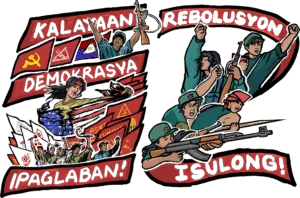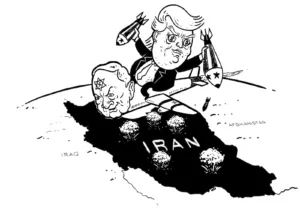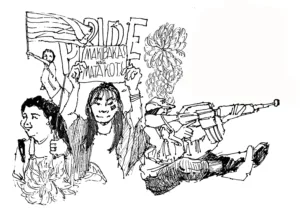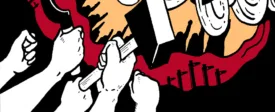Some instructors and the chief instructor of the Jose Maria Sison School (PJMS) gathered in a hut in a Southern Tagalog guerrilla zone. They were excited to start their classes. Three classrooms would open that night: students would be divided into classes on Proletarian Standpoint and Revolutionary Outlook, Political Economy, and Imperialism.
These gatherings have for about two months become a regular occurrence at each base of a New People’s Army (NPA) unit in Southern Tagalog. The unit opened the PJMS to formally start the Basic Party Course (BPC) for Party members and mass activists from consolidated communities.
The BPC was launched in segments to cope with the busy schedules of the masses working in swidden farms, doing livelihood, or child rearing. When the classes are delayed, the unit adapts by holding discussions or cultural meetings.
An area sometimes accomodates one to three classrooms, with another detached team conducting lessons closer to masses’ residences. Not waiting for ideal conditions to conduct classes is a strength of the unit. While simultaneous classes for large numbers of students were held, one-on-one or small groups sessions were also conducted to ensure the masses completed their studies.
Students in the classes included a mix of elders, youth, men, and women, and sometimes even their children. Similarly, instructors included veterans and young people, but the majority were from the new generation of youth. The instructors, who came from peasant and petty-bourgeois backgrounds, demonstrated excellent skills and abilities.
The unit launched the BPC because the masses clearly needed to be equipped with revolutionary theories and principles to confront and combat the intensifying crisis and state terrorism in their communities. This was also an effort to respond to the rectification movement, according to the unit.
Before the study sessions, the unit launched two waves of BPC Instructor Training workshops. The training aimed to adapt the BKP to the masses’ specific conditions, experiences, and culture. Having sufficient social investigation and class analysis in the local area was crucial for the instructors. They were also encouraged to be creative in their teaching methods and adept in interspersing revolutionary art into the topics.
The masses and people’s militia matched the army’s preparations. They assisted in inviting students, ensured security and transported needed supplies. Beyond this, the masses made sacrifices to attend the classes, which at times ended at 11 p.m., even when they had work the next day. In the late night hours, the masses and Red fighters would share coffee to keep the students and instructors awake.
At the end of the study sessions, the instructors and students would sing revolutionary songs. Before leaving, the masses and the Red fighters would shake hands and exchange words of encouragement, along with invitations and responses for the next study sessions. The classes led to the establishment of a new Party branch in the locality.
The resolve of the masses who completed the BPC was immediately put to test when their villages and areas faced AFP fascist attacks and focused military operations. Their unity thwarted state terrorism. They collectively fought, firmly united with their true army.
The active support and participation of the masses in the JMS School demonstrated their acceptance of the Party’s rectification and their role in it. This serves as a challenge to revolutionaries—especially to cadres and members of the Party and the army—for the local forces to embrace the rectification as their own task, to resolutely contribute their strength, intelligence, and capabilities to the reinvigoration of the people’s democratic revolution.











